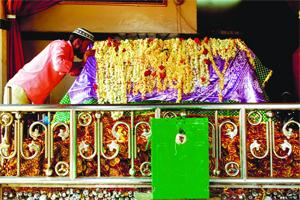The boy took a lock out of his pocket, fixed it to the grill and turned the key. He closed his eyes, prayed and left. “He has relinquished all his troubles here,” said Nawaz, the khadim-e-dargah (caretaker). “The Pir will now take care of them.” He added that people also consigned ill health and those possessed by spirits to the locks. Everything was possible in the saint’s durbar. All you need is faith.
Faith is what drove Bahadur Khan, the Killedar of the Bangalore Fort, to defend it with his life on March 21, 1791, during the Third Anglo-Mysore War. Like his fellow soldiers, the fort Commandant fought for Mysore and its freedom.
The former Faujdar of the Krishnagiri Fort had been recently shifted to Bangalore under Tipu Sultan’s orders. Tipu himself was busy fighting a determined and desperate General Lord Cornwallis. He trusted that Bahadur Khan, assisted by Muhammad Khan Bakshi and Sayyid Hamid, would be an able protector of the oval Bangalore Fort. The ancient mud structure had been reinforced in stone around 1761 by its erstwhile Killedar, Hazrat Ibrahim Khan, Hyder Ali’s maternal uncle and a Sufi pir of the Shuttari order.
Close to midnight, the English army stealthily attacked the fort. They crept along its walls (now busy KR Road), scaled its ramparts and cut soldiers down quietly by moonlight. A popular conspiracy theory whispers that the Mysorean army was betrayed from within and that the breach blown through earlier by English cannons was deliberately left unguarded. Bahadur Khan and a handful of soldiers fought fiercely till he died of a gunshot through the head. His body was stabbed repeatedly by bayonets.
Approximately 2,000 men lost their lives that night. The prosperous town of Bangalore had been laid siege to earlier, and now the fort had fallen. A victorious Lord Cornwallis commended his bravery and wrote to Tipu asking him where his noble Killedar should be buried. Tipu is said to have wept publicly, and replied that a soldier must be buried where he fell. He requested that the Killedar be handed over to the Muslim population of Bangalore who would ensure that his last rites were attended to appropriately
Bahadur Khan was buried near what is now the KR Market flyover. Flags flutter high over his green domed mausoleum at the corner of Avenue Road and SJP Road. It is revered by local populations and also called ‘The Lock and Key Dargah’ of Hazrath Mir Bahadur Shah Al-Maroof Syed Pacha Shaheed. Other warrior-saints sleep inside the Pete’s labrynthine streets. They create a sacred landscape that is interwoven with this densely commercial area.
The seventy-year-old Killedar was described by historians as a majestic figure, “a tall robust man… with a white beard descending to his middle.” The prophet-like reference only adds to the shrine’s reputation. People of all faiths walk in and out all day. They petition the saint and pray quietly amidst jasmine flowers and incense sticks, while buses ply and frantic commuters run to and fro outside. At dawn, the shrine is surrounded by roses in buckets, as wholesalers from KR Market squat outside its door. Sometimes, I find musicians with harmoniums and percussion instruments singing devotional songs as offerings. There is no courtyard or wall. Its doors remain open for the busy world to take refuge within. The custodian of Bangalore’s historic fortress continues to watch over the city’s population, centuries later.
